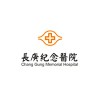
Reparative Therapy in Acute Ischemic Stroke With Allogenic Mesenchymal Stem Cells From Adipose Tissue,...
Ischemic StrokePhase IIa clinical trial, pilot, single centre, prospective, randomized, double-blind, placebo-controlled, with sequential inclusion of patients

The Effect of Positional Device on the Obstructive Sleep Apnea in Patients With Ischemic Stroke...
Sleep ApneaObstructive1 moreSupine positioning was reported to increase upper airway collapsibility, apnea frequency and duration. Positional therapy, designed to minimize supine sleep, was reported to be beneficial in the general sleep apnea population. As supine sleep is very common in stroke patients, positional therapy might also have therapeutic effects. Given differences between stroke patients with sleep apnea and the general sleep apnea patient, such as rolling ability, body mass index and daytime sleepiness, positional therapy results in the general population may not be applicable to the stroke patient. The effects of positional therapy in ischemic stroke patients with OSA have not been well-investigated. We therefore performed a pilot randomized, controlled, cross-over study to test the following hypotheses: (1) positional therapy reduces the amount of nocturnal supine positioning in patients with subacute ischemic stroke, and (2) severity of sleep apnea improves, as reflected by apnea-hypopnea index (AHI), during positional therapy. The tolerability of positional therapy over a 3-month period in patients with ischemic stroke was also evaluated.

Reperfuse Ischemic Vessels With Endovascular Recanalization Device in JAPAN (RIVER JAPAN)
Acute Ischemic StrokeThe main objective of this study is to document that the thrombectomy catheter (Rev-01) is effective and safe when used for revascularization in subjects with acute ischemic stroke within 8 hours of symptom onset who are ineligible for treatment with IV t-PA, or in whom treatment with IV t-PA has been ineffective.

A Safety Study of Ginkgolides Meglumine Injection in the Treatment of Ischemic Stroke.
Ischemic StrokeThe aim of this study is to evaluate the safety of Ginkgolides Meglumine Injection in the treatment of ischemic stroke with Syndrome of Intermingled Phlegm and Blood Stasis.

EndoVascular Treatment With Stent-retriever and/or Thromboaspiration vs. Best Medical Therapy in...
StrokeIschemic StrokeProspective, multi-center, randomized, controlled, open, blinded-endpoint trial with a sequential design. The randomization employs a 1:1 ratio of mechanical thrombectomy with stentriever and/or Thromboaspiration versus medical management alone. Randomization will be done under a minimization process using age, baseline NIHSS, use of IV tpa, vessel occlusion site and hospital. To evaluate the hypothesis that mechanical thrombectomy is superior to medical management alone in achieving more favorable outcomes in the distribution of the modified Rankin Scale scores at 90 days in subjects presenting with acute large vessel ischemic stroke <8 hours from symptom onset. Subjects are either ineligible for IV alteplase or have received IV alteplase therapy without recanalization. Sample size is projected to be 690 patients for a difference in treatment effect of 10%.

A Randomized Trial Comparing 2 Methods for Rapid Induction of Cooling in Stroke Patients, Cold Infusions...
Ischemic StrokeHemorrhagic StrokeMild hypothermia improves outcome in patients with global cerebral ischemia after cardiac arrest. Hypothermia seems promising also in other acute hypoxic-ischemic or in brain swelling associated cerebrovascular disease. The narrow-time-frame is a major issue ("time is brain"). To provide immediate cooling without delay, easy to use, mobile and effective methods are needed. Cold infusions (4 °C) are an accepted standard worldwide. The RhinoChill (BeneChill, USA) is a new device. A comparison of these two induction methods has never been done before. Neither was the effect of cold infusions on brain-temperature measured. For the first time iCOOL 1 compares feasibility, safety and efficacy of the two methods.

Dietary Intervention With the Modified Atkins Diet in Stroke Rehabilitation
StrokeIschemic StrokeThis phase 1 study tests whether use of the Modified Atkins Diet (MAD) can improve motor impairment after stroke. It is based on the hypothesis that after stroke, the brain's utilization of glucose, it's primary source of energy, is disrupted. The MAD is a low-carbohydrate diet that has can switch the body's metabolism from using glucose to using products of fat metabolism, so-called ketones. Ketones may act as an alternative energy substrate for the brain. Ketones also have several neuroprotective effects after stroke.

Hyperbaric Oxygen and Manipulative Therapies to Regain Function Post Stroke
StrokeMotor Dysfunction2 moreTo study safety, feasibility and outcomes of combining osteopathic manipulative therapies with hyperbaric oxygen therapy in reducing the functional deficits in stroke survivors in subacute and chronic phases post ischemic stroke. To document the same as part of a pilot project in anticipation of further investigational studies.

Mechanisms of Arm Recovery in Stroke Patients With Hand Paralysis
StrokeHemiparesis3 moreThis study examines the effect of non-invasive brain stimulation targeting different brain areas on movement of the affected arm post-stroke. Participants will receive stimulation to each of 3 different brain areas combined with a session of arm exercise.

The Effect of Cilostazol Compared to Aspirin on Endothelial Function in Acute Cerebral Ischemia...
Ischemic StrokeEndothelial DysfunctionPatients presenting with acute cerebral ischemic events are randomly assigned into aspirin (n=40) or cilostazol (n=40) group in a double-blinded manner. FMD is measured as a primary outcome at baseline (T0) and 90 days (T1). Serious and non-serious adverse events were described.
